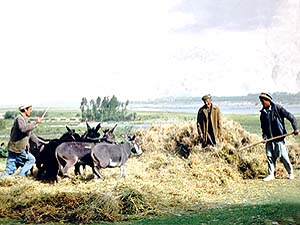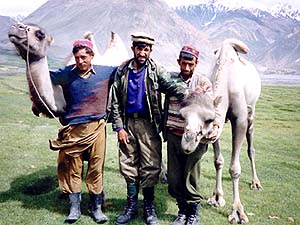Service & Area
Quick Links
Wakhi
 The inhabitants of Wakhan , Boroghil and Gujal are the Wakhi tribe who belong to an ancient Iranian stock, They have Moingolide features and it is believed they are the master speakers of Ghalcha language of the past.. A thin wedge of Afghan territory known as the “Wakhan corridor” separates Tajikistan and Pakistan which is the home land of these nomads. In Chitral and Ishkuman, Wakhan is known as Wokh and the people as Wakhi, in Hunza the name of Wakhan is Gojal and the people of Wakhan as Gojali. In the past the name of Hunza was little Gojal, while Wakhan was known as big Gojal.
The inhabitants of Wakhan , Boroghil and Gujal are the Wakhi tribe who belong to an ancient Iranian stock, They have Moingolide features and it is believed they are the master speakers of Ghalcha language of the past.. A thin wedge of Afghan territory known as the “Wakhan corridor” separates Tajikistan and Pakistan which is the home land of these nomads. In Chitral and Ishkuman, Wakhan is known as Wokh and the people as Wakhi, in Hunza the name of Wakhan is Gojal and the people of Wakhan as Gojali. In the past the name of Hunza was little Gojal, while Wakhan was known as big Gojal.
The Wakhi live as a semi-pastoral society, which depends on agriculture and cattle raising. The Wakhi huts are made of mud and due to climate conditions their huts have no veranda or corridor. All the rooms in the house are interconnected and have one outlet at a convinent place well protected from the wind. There is a small outlet for smoke and light. Cooking is done in the living room , while grain storage is in a separate room connected to it.  If in the neighbourhood of a settlement a suitable base area of stone is located then a centeral storages place is constructed having separate areas for different families. The people are peace loving modest and friendly. Crimes do not exist in this society and the people have a peaceful existence. Due to the harsh weather and long winters people are addicted to opium.
If in the neighbourhood of a settlement a suitable base area of stone is located then a centeral storages place is constructed having separate areas for different families. The people are peace loving modest and friendly. Crimes do not exist in this society and the people have a peaceful existence. Due to the harsh weather and long winters people are addicted to opium.
Trans border relations of the frontier people are very common in areas where borders are mere unnatural barriers. When the Persians and Tartars subjucated the areas north of the Hindukush in the 12th century the southern valleys of the Hindukush gained a distinct identy under different names as Bolor, Dardistan, Tibet Gujal, Kashkar etc who were divided by the chains of mountains however the Ghalcha and Dard people living on the northern and southern side of the Hindukush have been close to each other despite the natural hurdle of the mountain chains.
Trade caravans and pilgrims from eastern Turkistan used to cross over the Kurambar Boroghil and Darwaza passes into Chitral and this caravan route served as a permanent link between these regions. Many people from Chitral crossed into Wakhan for permanent settlement. The Wakhi herdsmen usually came with their flocks to the Boroghil for summer camps. Wakhi horsemen used to visit for Polo and Buzkashi as far south as Razdan field in Torikho valley.
 The Wakhi art, craft and architecture occupy a distinct place in the neighbouring area. There are certain festivities which mark particular occasions and vary from valley to valley. The first seed sowing is a time of festivity where a bowl of grain part of it roasted is handed to the head of the family who scatters half of it around the house. Then the house head first scrambles as if starting for his plough then rushes back onto the roof top to scatter the remaining bowl through the ventilation sky hole in the roof into the house.
The Wakhi art, craft and architecture occupy a distinct place in the neighbouring area. There are certain festivities which mark particular occasions and vary from valley to valley. The first seed sowing is a time of festivity where a bowl of grain part of it roasted is handed to the head of the family who scatters half of it around the house. Then the house head first scrambles as if starting for his plough then rushes back onto the roof top to scatter the remaining bowl through the ventilation sky hole in the roof into the house.
He then goes to the fields to trace circular line twice around it and scatters seeds, his entry into the house is resisted and after much persuasion the women open the doors. Next day early in the morning before daylight he bring an ass into the house and there is much joking and fun made after which the ass is sprinkled with flour and driven out. The Wakhi are fond of music Daf open drum and flute and Rabab are popularly played. Male members are responsible for farming, weaving woolen clothes . While women look after the house and cattle.
